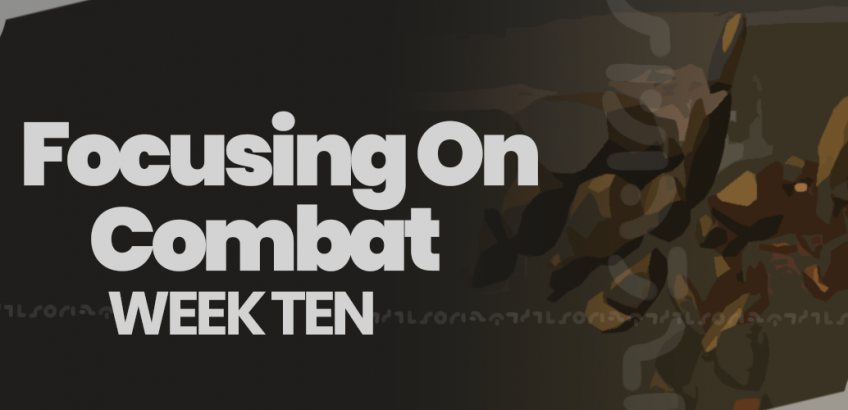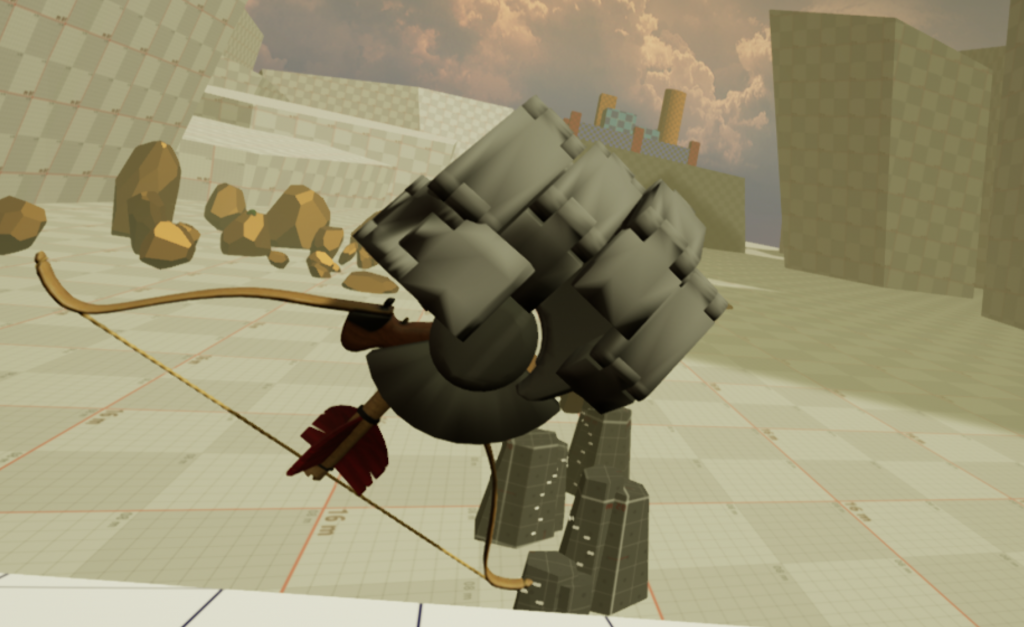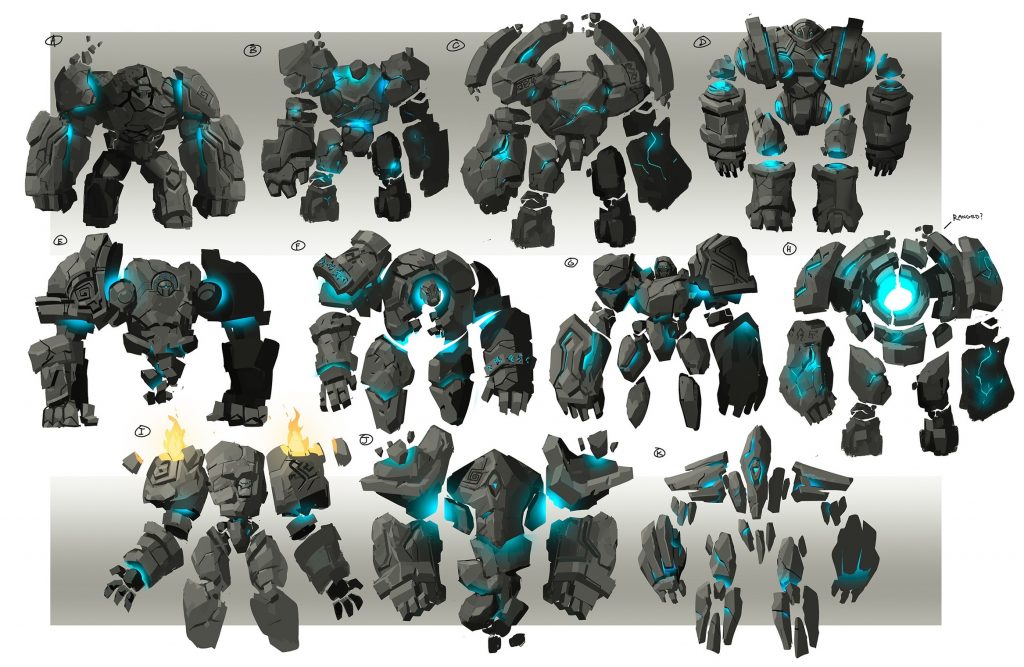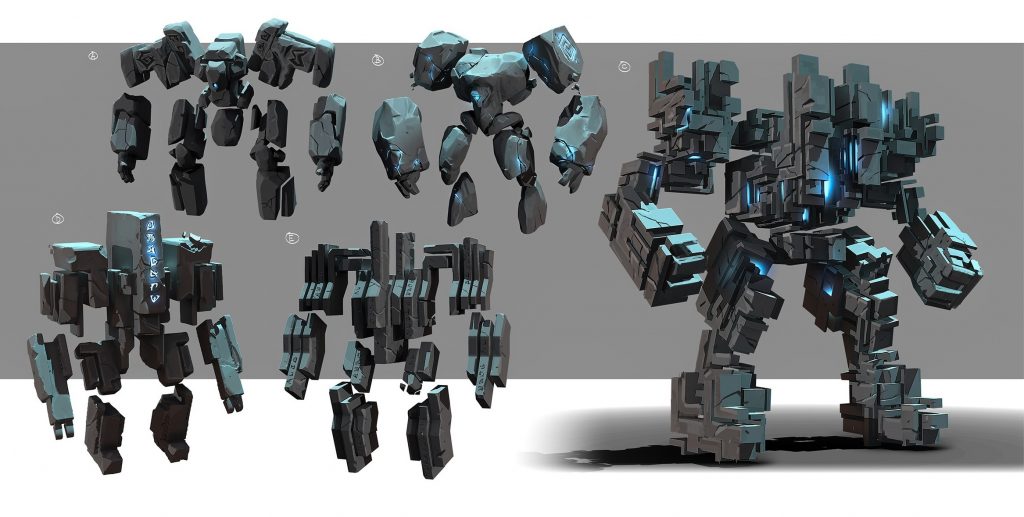
Week 10 – Focusing on Combat
This week was all about building off of last week’s progress while starting to experiment in some newer territory. We continued some testing of our crystal LSE while thinking of a combat moment to build for this week.
Even the simple act of changing the texture of the LSE to something translucent provided both questions and answers. After our programmer played this particular build and recorded it, we all came together to discuss the experience. Some noteworthy observations included:
- Knowing where you were on the LSE proved more difficult given how the different body parts were see-through.
- The loom response was not nearly as strong as it was before. Why?
- Motion sickness continued to be a non-issue. Why?
The first question was an obvious one to us. By visibly being able to see one section on top of or underneath another, being able to create a map in your head was confusing and strange as if you were navigating a hall of mirrors. Traversal becomes that much harder when navigability is working against you.
We were a little surprised that the loom response was not as strong as before. However, we realized how close we are to the project so perhaps our take on it is skewed. We showed the video to our advisors, who promptly agreed with us. We were advised that the texture itself is creating a less daunting LSE, and by proxy, the loom response suffers. By having the LSE made of crystal that is translucent in this manner, it makes the LSE seem breakable and fragile. While still large, the adversity isn’t there anymore since we all know how easily one could shatter glass. If we continue to test this, it was suggested that we look to glacier ice as a source of inspiration; that is, have the edges of the body parts remain transparent to give off the crystalline feel, but the centers solid to promote thickness and stability.
Finally, our initial hypothesis in changing the LSE’s texture would be that motion sickness would be affected, but from the limited amount of testing that we were able to do that does not appear to be the case. As of now, our summation (which is not definitive by any means) is that being task-oriented and focused is a psychological aid in preventing motion sickness. Since one is so intent on getting from point A to point B in that build, perhaps the rest of the world fades away. You’re just so concentrated that your brain is “ignoring” the potential motion sickness to help you achieve what you are focused on. Again, this is not a final conclusion, but it is an interesting new area that has the potential to be explored in much more detail.
Focusing on Combat
This is an aspect we are diving in head-on, and for this week we worked on pushing ideation from last week’s ideas. As it turns out, direct combat against a foe like our LSE provided difficult to brainstorm around. We came up with a list of all sorts of different ways to do combat but kept having movement and traversal be a major part of the formula. After an extensive session on Zoom, we took a breath and a step back.
We ultimately decided to go with a variation of the “Powerful Hands” archetype, since Frozen Flight was focusing more on traversal anyway. To this end, we decided to pivot from our “vertical slice” approach and work on “one cool moment” and then see if that moment is worth building upon. Given our newer situation of working remotely, we made the choice to start smaller than what we were currently doing when attacking questions, and really push the “discovery” and “exploration” aspects of our project.
With this in mind, we got to work creating anew. Multiple sound effects of punching rocks were created to make that repetitive action feel more organic, while music was lifted from media that focused on hand-to-hand combat such as the anime series One Punch Man.
In addition, a new hand model was made and implemented into this new prototype. This gauntlet will hopefully add to the power that your hands possess, and we even thought of using part of the gauntlet as a potential UI element down the road.

On top of working towards this combat moment, our previous and future builds will now be playable on Oculus devices as well as Valve Index. Time was taken for this to allow more members of our team to aid in testing as well as allowing our builds to be tested, played, and enjoyed by a larger audience.
With a new level, new models, and new mechanics, we have a potential combat moment. If this feels cool and worth pursuing, this is what we will be refining and building off of for the next week or so. Below are some testing videos showcasing how it might feel to be hit by the LSE as well as further testing of the “climb jump” or “leap jump” mechanic for later use:
Oh, and there might be a new LSE coming to fight you. Here are some reference images we’re using as a jumping-off point.

